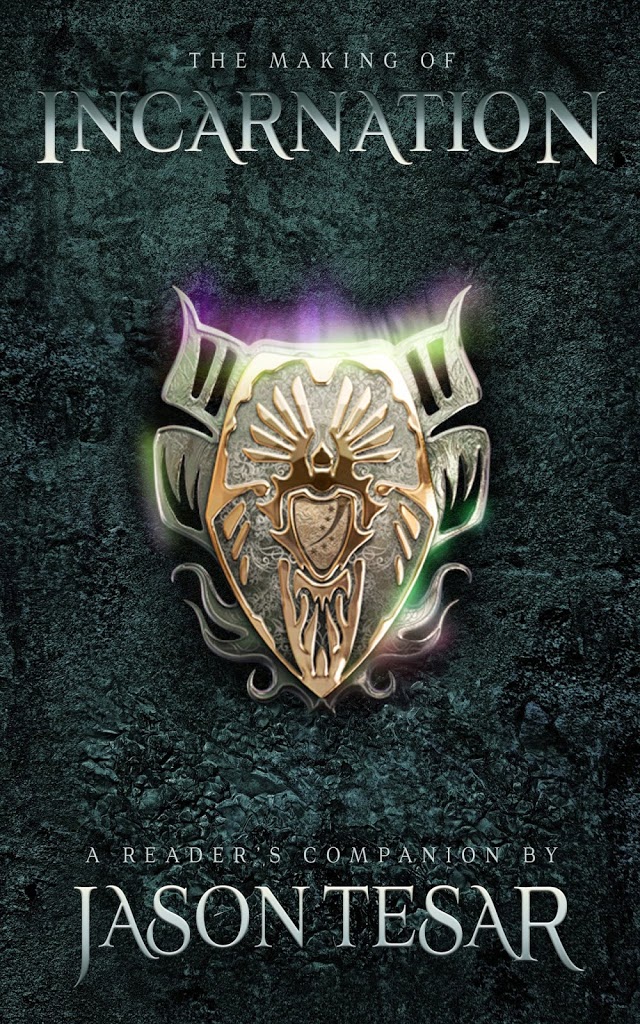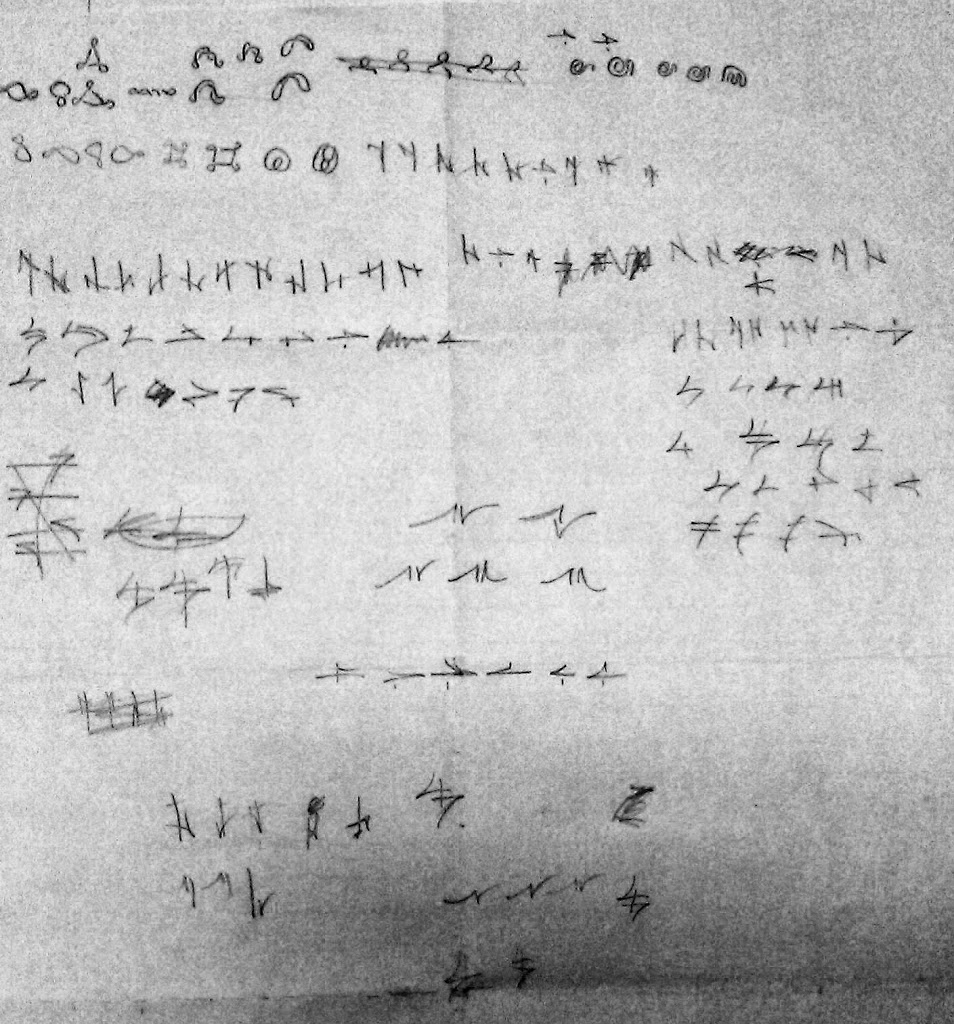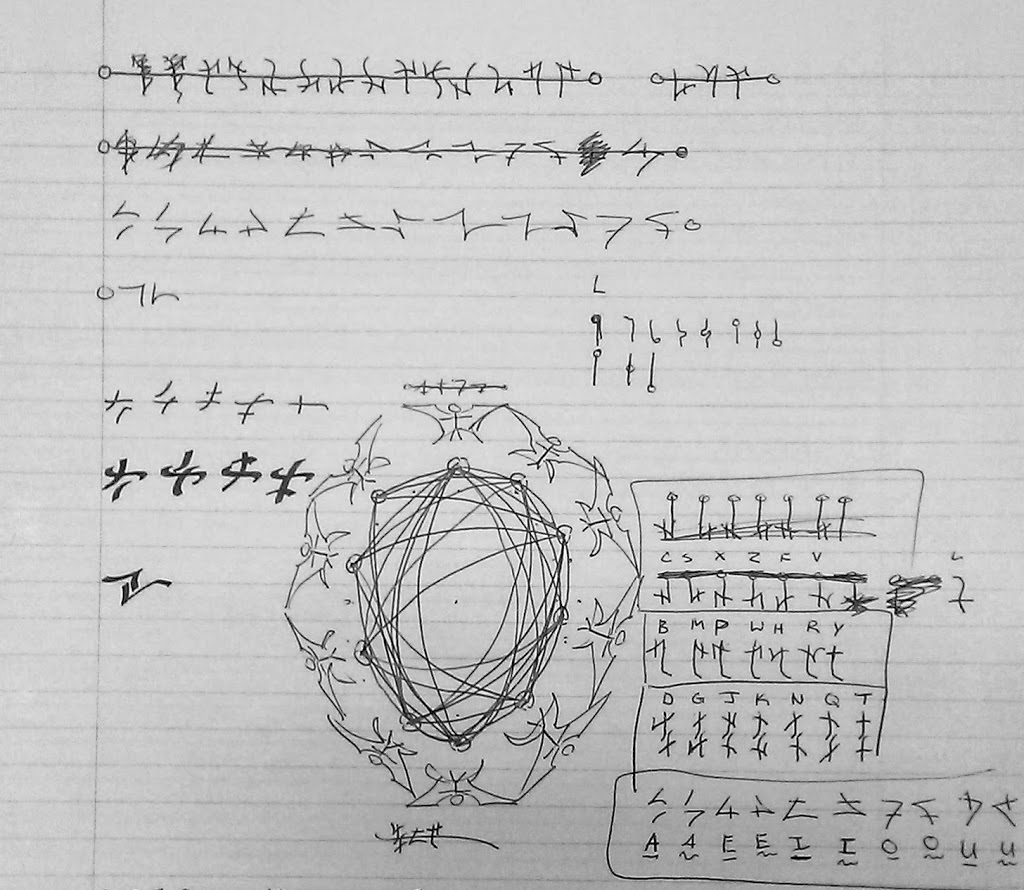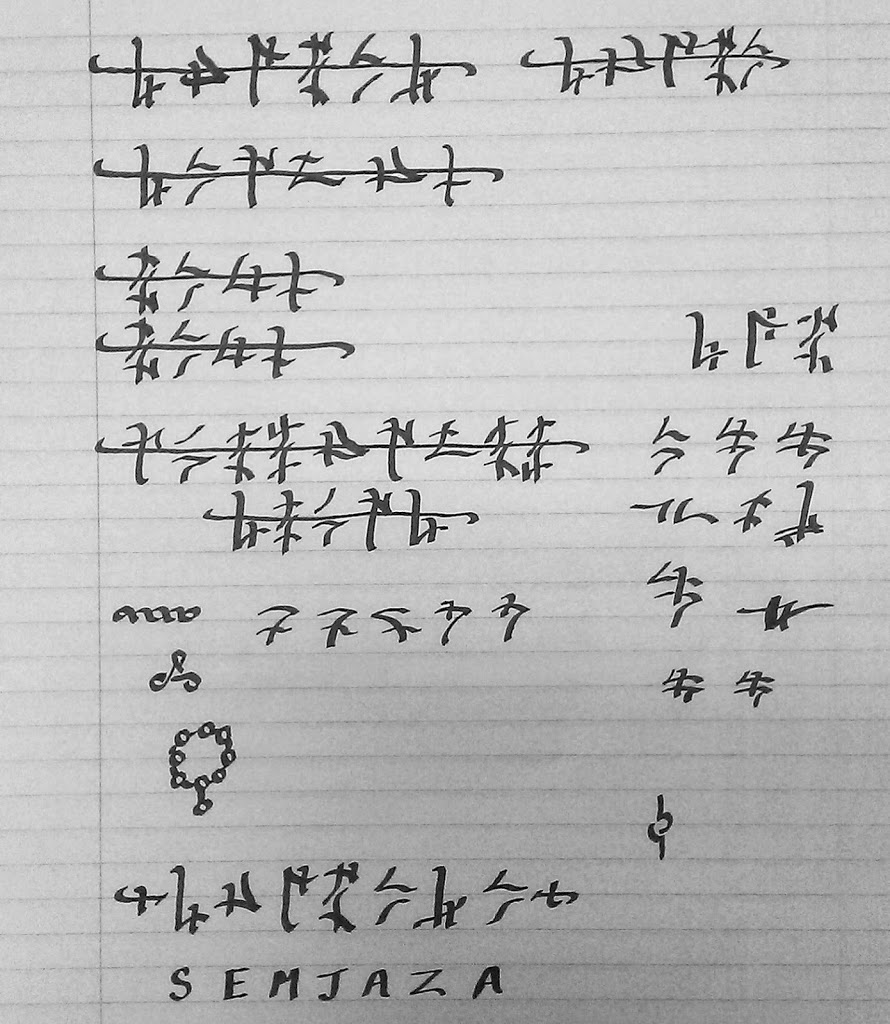This is an excerpt from The Making of Incarnation: A Reader’s Companion, available now from Amazon, Barnes & Noble, iTunes, and Smashwords.
In the years before I started writing the first book of The Awakened series, I spent many hours imagining the backstory. Inspired by the methodology of J.R.R. Tolkien, who created entire cultures starting with their languages, I imagined the angelic realms and what the lives of these mysterious creatures might be like. I thought about sound waves being transmitted through different environments and whether language meant the same to them as it does to us. By the time I started planning Incarnation these imaginings had grown into a full-blown desire to create my own languages for all of the angelic and human races. Here is something I wrote in a notebook during that time:
Spoken Language: The language of the angels is a complex arrangement of sounds emitted both in series (melody) and in parallel (harmony). Different orders of angels are given different physical and mental capacity to perceive and create sound, such that lower orders can only understand and speak a fraction of the language. Because the language requires the simultaneous creation of more than one sound/note, it is physically impossible for humans to speak it. Thus, the angelic language became known as the unspeakable language.
Just as our ears can only hear a range of frequencies, and our vocal chords can only create a range of frequencies, so also it is among the orders of angels. The fallen angels turned from their original purpose. As such, they adopted dissonance as their language.
Written Language: The language of the angels can be expressed through written form due to the absence of physical restrictions (many characters making up one word). Therefore, the written language of the fallen angels is based on eastern musical scales (having a dissonant sound), while the original language is based on western scales (having a harmonic sound).
I even began scribbling the origins of what I hoped would become the written angelic language. Here are a few of those doodles:
Even though these ideas captured my imagination, the practical side of me argued that I could spend years learning how to create a language, and still many more years implementing it. This wouldn’t have left much time for writing. And very few people would have appreciated that level of world-building anyway. This led me to the decision of basing my languages on those already present in this world, which freed me up to concentrate on the story itself.
As an American, the Scandinavian languages have always seemed otherworldly to me. So I based the written angelic language on a mixture of Old Norse, Icelandic, Norwegian, and Finnish (with a little Hebrew thrown in for good measure).
For the human languages, I still wanted something quite far from my own English language. These were prehistoric cultures after all. With two primary lines of descent, I also wanted two languages that came from the same part of the world but were distinct from each other. For the Shayetham and the Chatsiyram, I chose Hebrew. For the Kahyin, I chose Arabic. I maintained an English sentence structure, and then chose each word based on how well it seemed to fit into the culture I had created. Where certain words seemed an awkward fit, I broke down the pieces and reassembled my own. In the end, I was able to present something that most readers wouldn’t recognize—though one or two people have—and didn’t take half my lifetime to create from scratch.
__________
This is an excerpt from The Making of Incarnation: A Reader’s Companion, available now from Amazon, Barnes & Noble, iTunes, and Smashwords.
Sign up for my email list to be notified when I release the next volume of the Wandering Stars series.
Read another excerpt – Deleted Scene from Incarnation
Read another excerpt – The History of the Realms



